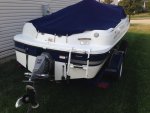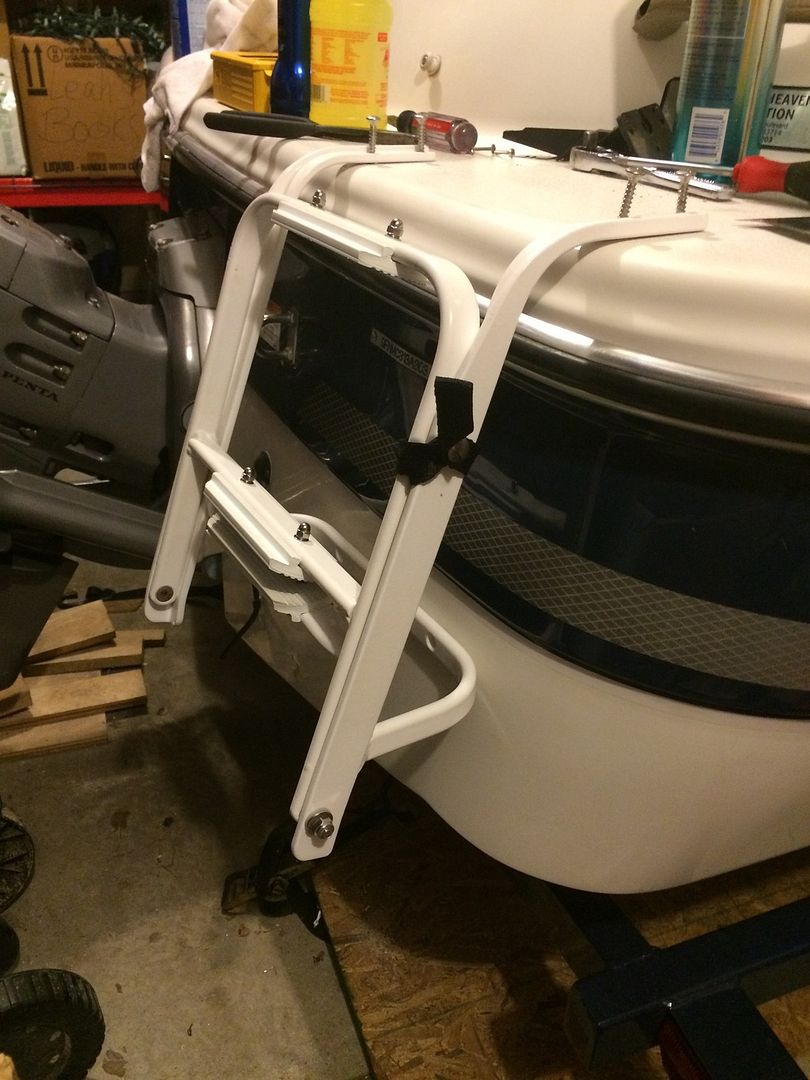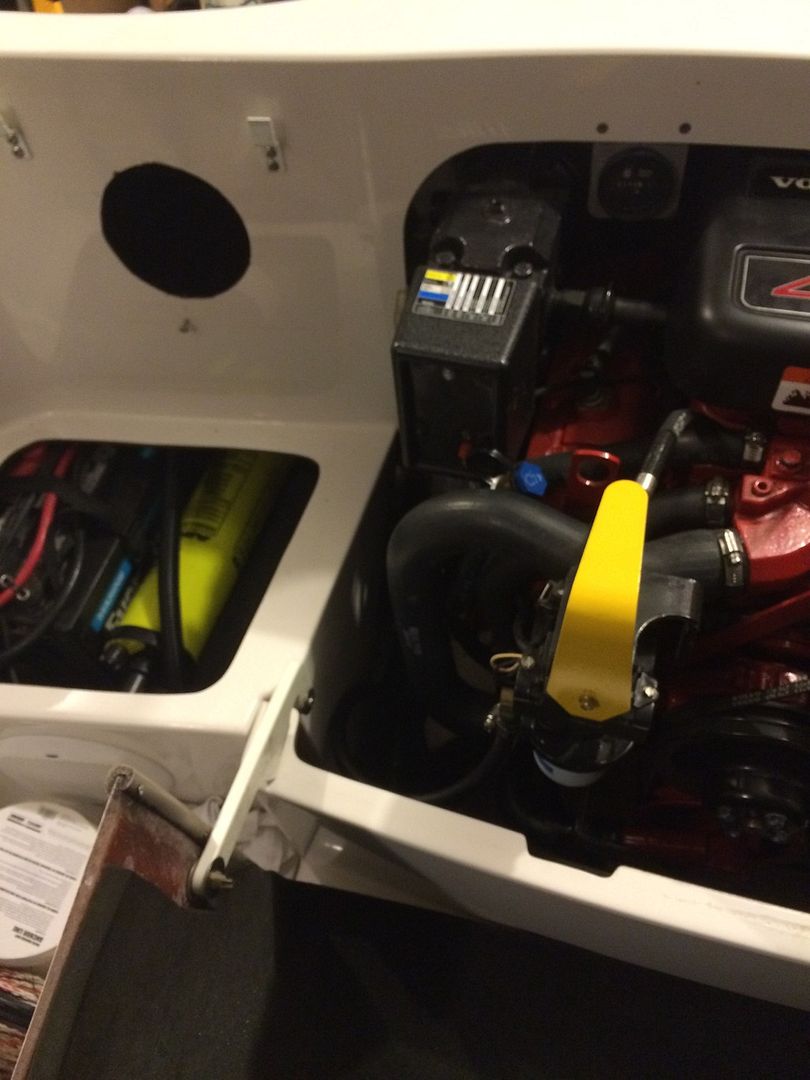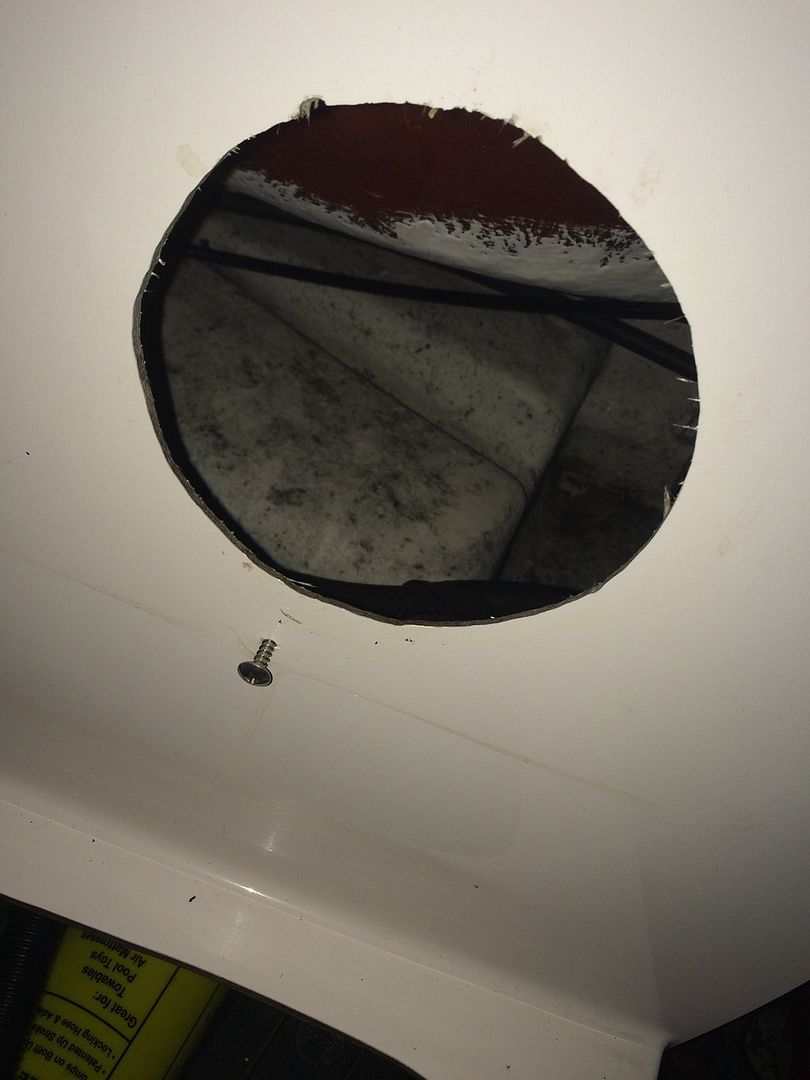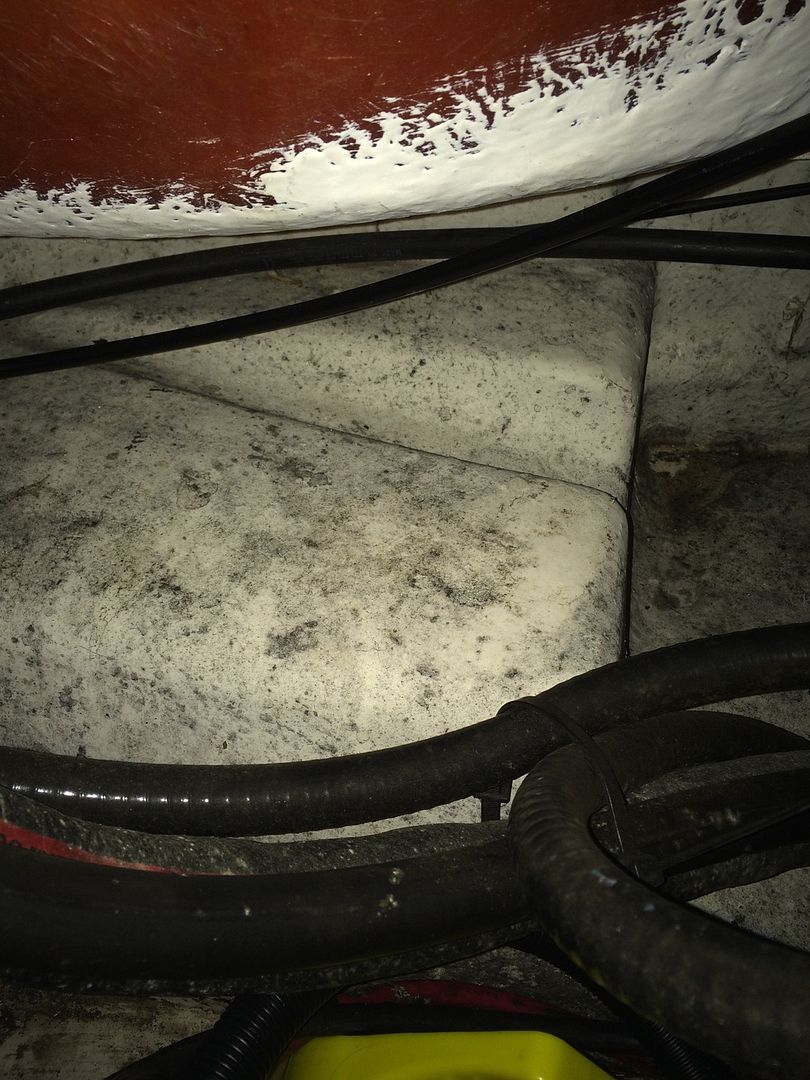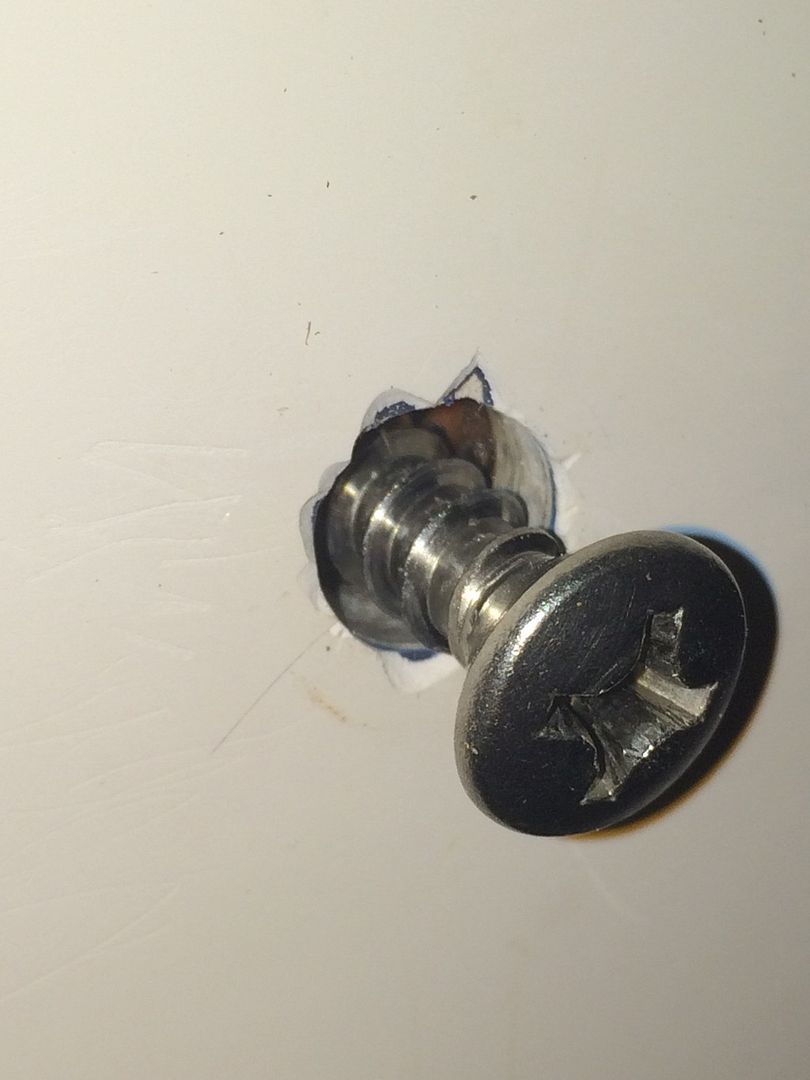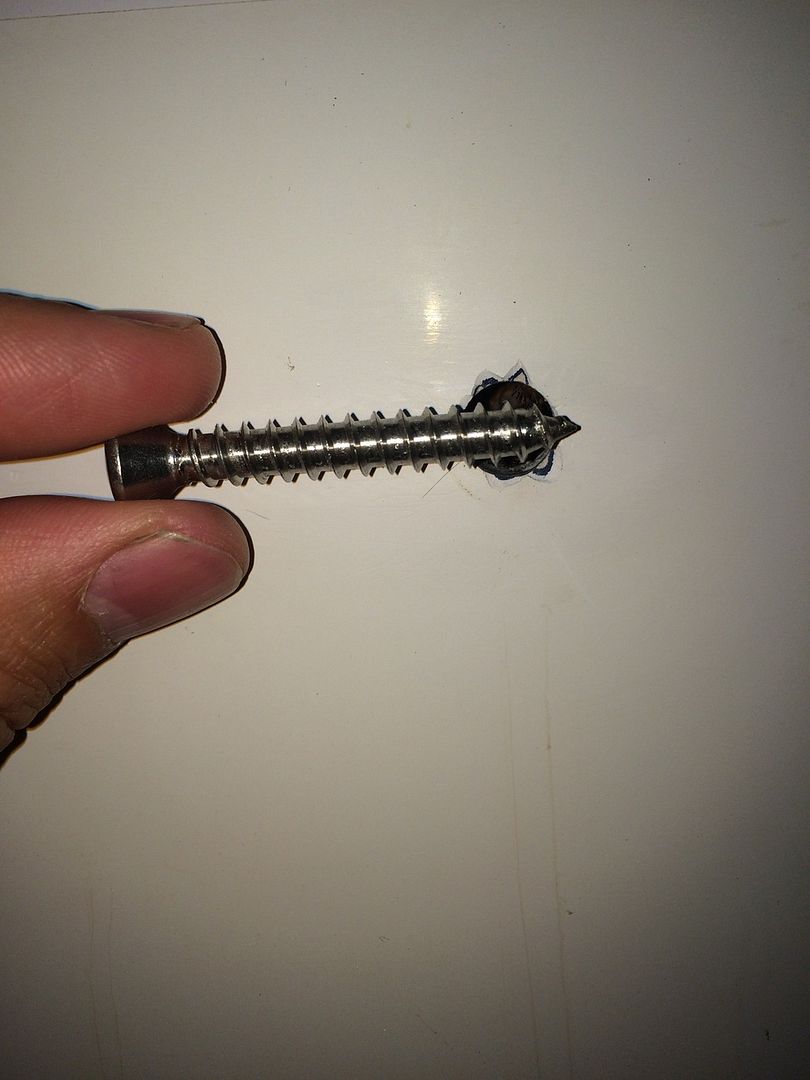My boat has a factory boarding ladder that fastens to the hull below the water line with two good-sized stainless wood screws. The ladder frame wraps over the top of the integrated swim platform and fastens with screws up top also so that the swim platform bears most of the weight; however, the screws below the waterline mostly hold the ladder securely to the back of the boat and absorb a little bit of tensile/shear stress if someone heavy steps on the ladder and the frame flexes a little, which does occur with my crew.
The original sealant broke the seal after 12 years and some water got into the hull. The hull is a non-cored fiberglass with a wood backing plate that appears to be ?? plywood. The plywood is pretty wet, not dripping wet, but very moist. I cannot replace the plywood backer without doing deconstruction work inside the engine compartment which would likely involve removing the engine. I drilled out one hole somewhat larger, about 3/8? now and the wood is still wet.
I need to get the boat back on the water immediately to salvage an upcoming boat trip.
I was going to enlarge the holes and put 105/205 epoxy with 404 filler in it (I thought the sealer failed partly because the screws would wobbly very slightly when tightened) before I realized the plywood was wet behind it. So now I am wondering if I should quickly order some g-flex epoxy to replace the 105/205 since it is supposed to bond with wet wood, or, if this even matters and I would be fine with the 105/205 + 404 to get by for a couple more seasons (or at least this season).
I am not sure that the 105/205 making a weak bond with the wet plywood is a big deal since most of the forces on the screws are lateral (shear) forces moreso than pulling forces and the epoxy would conform to the shape of the plywood and be supported by it even if it did not bond well with it. So this theory leads me to stay with what I have and use the 105/205. However, the added bond of the g/flex to the wet plywood would certainly be a plus; however, my concern with the g-flex is it will be too soft to hold the screws nice and tight without any wiggle. I have never used either epoxy in this type of an application.
What should I do? I need to act quickly either way. I have the 105/205 in hand now but if the g-flex will be superior I will pay the $ to get it here right away and do the best repair possible on such short notice. I have had this boat for over a year and had it out three three trips - working on it the rest of the time cutting my teeth and so if I can do a reliable repair now and then fix it right a couple years down the road when I am (hopefully) in a better mood to work on this boat again that would be great.
Thoughts?
The original sealant broke the seal after 12 years and some water got into the hull. The hull is a non-cored fiberglass with a wood backing plate that appears to be ?? plywood. The plywood is pretty wet, not dripping wet, but very moist. I cannot replace the plywood backer without doing deconstruction work inside the engine compartment which would likely involve removing the engine. I drilled out one hole somewhat larger, about 3/8? now and the wood is still wet.
I need to get the boat back on the water immediately to salvage an upcoming boat trip.
I was going to enlarge the holes and put 105/205 epoxy with 404 filler in it (I thought the sealer failed partly because the screws would wobbly very slightly when tightened) before I realized the plywood was wet behind it. So now I am wondering if I should quickly order some g-flex epoxy to replace the 105/205 since it is supposed to bond with wet wood, or, if this even matters and I would be fine with the 105/205 + 404 to get by for a couple more seasons (or at least this season).
I am not sure that the 105/205 making a weak bond with the wet plywood is a big deal since most of the forces on the screws are lateral (shear) forces moreso than pulling forces and the epoxy would conform to the shape of the plywood and be supported by it even if it did not bond well with it. So this theory leads me to stay with what I have and use the 105/205. However, the added bond of the g/flex to the wet plywood would certainly be a plus; however, my concern with the g-flex is it will be too soft to hold the screws nice and tight without any wiggle. I have never used either epoxy in this type of an application.
What should I do? I need to act quickly either way. I have the 105/205 in hand now but if the g-flex will be superior I will pay the $ to get it here right away and do the best repair possible on such short notice. I have had this boat for over a year and had it out three three trips - working on it the rest of the time cutting my teeth and so if I can do a reliable repair now and then fix it right a couple years down the road when I am (hopefully) in a better mood to work on this boat again that would be great.
Thoughts?




















